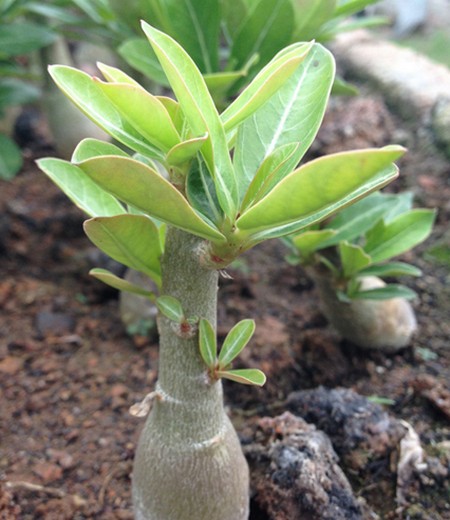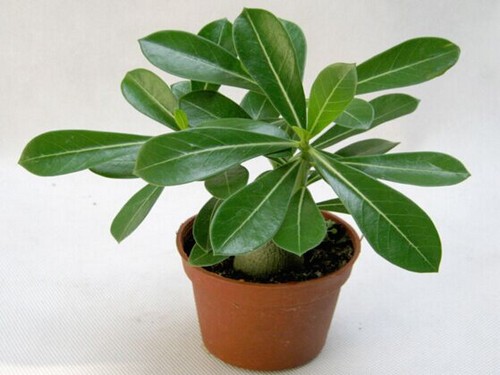Culture methods and matters needing attention of oleander bonsai
Oleander, false bamboo peach also, its leaves like bamboo, its flowers like peach, it is neither bamboo nor peach, hence the name, some people call me "willow leaf peach". It likes light, warmth, drought tolerance, planted in the open air, almost without too much management, can grow very well. Once he has survived, he will take the initiative to assume the responsibility of the surrounding "environmental protection guardian" and contribute to the fresh air and beautiful scenery of mankind. Because it is toxic, please do not plant it in the front and back of the house and in places where people often walk, and put up signs beside you to remind everyone that "you can only see from a distance, not to play."

1. Lighting: oleander likes sunshine, so it should be maintained in a sunny place during the growth period, otherwise the flowers are less and the color is light.
2. Temperature: oleander should be planted in the leeward and sunny place. In winter, people can resist freezing indoors, and the room temperature is not lower than O ℃. The temperature is too high and consumes nutrients, which is disadvantageous to the growth and flowering of the second year. In winter, those with high outdoor temperature can cultivate soil to keep out the cold.
3. Watering: oleander likes water but is afraid of waterlogging. in case of continuous rainy days, stagnant water in the basin should be poured in time to prevent rotting roots. If you water too much, the leaves will fall off one after another, affecting the flowering of the following year. Watering in spring and autumn should be dry and wet, and it is appropriate to keep the basin soil moist. Summer is the period of exuberant growth and flowering of oleander, so it needs a lot of water, so it is appropriate to irrigate the branches and leaves every morning and evening, so as to keep the leaves fresh and green. Enter the house in the middle of October, after entering the room, you should control the watering. Do not have too much water, otherwise it is easy to rot roots and leaves, affecting the growth of the following year.
4. Fertilization: oleander likes fertilizer, and thin liquid fertilizer can be applied every 20 days or so from going out of the room to flower fade (Frosts Descent). Oleander grows rapidly after the Beginning of Autumn, so fertilizer and water can be applied every 15 days or so until before entering the room.
5. Pruning: if oleander is not cut laissez-faire, the plant shape is too large, so it is necessary to arrange the branches or stems when they are cultivated in clumps. Oleander germination is stronger than cutting in the middle of the branch, it can send out most of the branchlets from its incision and affect the plant shape, so it must be cut off at the base of the branch in principle when pruning.
6. Insect pests: Brown spot is an important disease on oleander. At the initial stage of the disease, 1000 times of 50% carbendazim wettable powder or 25% carbendazim wettable powder and 36% methyl thiophanate suspension were sprayed.
Note:
Oleander has strong adaptability, easy cultivation and management, and is relatively extensive no matter in the field or in the pot. In the place where the ground is planted, transplanting should be carried out in spring, and re-cutting should be carried out when transplanting. Pay attention to protection in winter. Branches and leaves are vulnerable to scale insects, so attention should be paid to prevention and control.
Potted oleander requires not only good drainage, but also sufficient fertility. After 1 ~ 2 years, the basin was changed once, and the basin should be changed after pruning.
Spring germination needs shaping and pruning, the overgrown branches and slender branches in the plant can be cut from the base, and the dense branches in the inner chamber should also be thinned to make the branches distributed evenly and keep the tree shape plump.
Summer is the period of exuberant growth and flowering of oleander, which requires a lot of water. In addition to watering once a day in the morning and evening, if the pot soil is too dry, one more spray should be added to prevent the twigs from wilting and affecting the flower life.
After September, water should be deducted to inhibit the continued growth of the plant, make the branch tissue mature and increase the accumulation of nutrients in order to survive the winter safely.
The overwintering temperature should be maintained at 8-10 degrees, below 0 degrees, that is, the leaves will fall. Oleander is a fertilizer-loving plant, which should be applied once a month during the growing period in addition to sufficient basal fertilizer.
Time: 2019-06-02 Click:
- Prev

Maintenance method of Zanthoxylum nitidum bonsai
Zanthoxylum nitidum toothpaste is all too familiar to the Chinese people. Its main pharmaceutical ingredient is extracted from the leaves of Zanthoxylum nitidum, which has the effect of clearing away heat and detoxification. In fact, Zanthoxylum nitidum is not only an important raw material for medicine, but also an ideal variety for making bonsai. After the new pile is put on the basin, cover the pile body with a transparent plastic bag or film
- Next

Maintenance method of oleander bonsai
Oleander, alias willow leaf peach, half a year red, is a large evergreen shrub of Oleaceae and oleander, with large flowers, dense inflorescences, dense red, double petals and high ornamental value. Native to India, Iran and Afghanistan, it has a long history of cultivation in China, covering both urban and rural areas in the north and south. The leaves of oleander are like bamboo
Related
- Fuxing push coffee new agricultural production and marketing class: lack of small-scale processing plants
- Jujube rice field leisure farm deep ploughing Yilan for five years to create a space for organic food and play
- Nongyu Farm-A trial of organic papaya for brave women with advanced technology
- Four points for attention in the prevention and control of diseases and insect pests of edible fungi
- How to add nutrient solution to Edible Fungi
- Is there any good way to control edible fungus mites?
- Open Inoculation Technology of Edible Fungi
- Is there any clever way to use fertilizer for edible fungus in winter?
- What agents are used to kill the pathogens of edible fungi in the mushroom shed?
- Rapid drying of Edible Fungi

